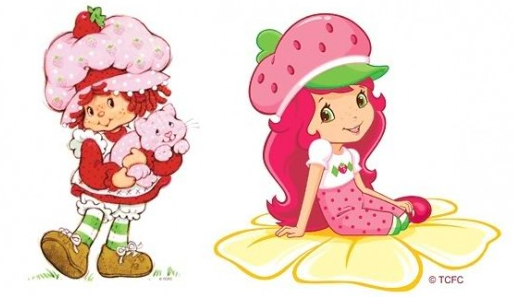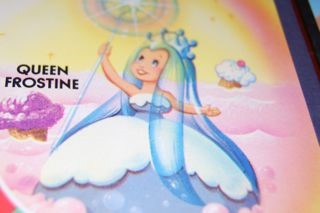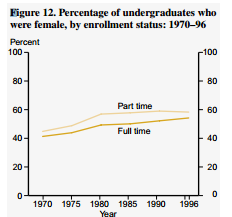Females in the United States are taught to believe that their looks are their most important assets. There are avenues of conditioning from birth. Not all of these are intentionally negative, but can create negative impacts on women’s lives in the form of mental illness such as eating disorders.
Girls are being treated as objects of physical beauty from infancy. Clothes branded as “funny” objectify little girls and only seem to label them as different levels of attractiveness. These can be seen on the images of baby girl clothes below:
While obviously an infant cannot read what is printed on a onesie, people also verbally tell little baby girls how beautiful and cute they are. Both practices condition everyone else to continue in the belief that a female’s most important feature is her looks. This practice continues as these little girls grow older.
As toddlers, girls are exposed to clothes, and now also toys that have been sexualized in an of themselves. Since the 1990’s, modern characters from classic games have gotten makeovers that make the characters look older and usually thinner.

Strawberry Shortcake is a character targeted towards pre-school aged girls. In the 90s, she was a sweet, innocent, doll-like character. Her modern counterpart looks much older, with more fashion-based clothing, long shiny hair, and even possibly makeup.
An even more extreme sexualization comes in the form of Candy Land, found here, a popular kids game that is marked for children ages 3+ The original game was very innocent, but revisions of the game have updates characters whom are far more risque.


The new Queen Frostine has heavy makeup, longer hair, a more shapely costume, and even fishnet stockings. She even stands in a pose.
So now, at the age of approximately five, girls are wearing clothes that talk about attractiveness, verbal affirmations based on looks, and are playing with toys that look much older than them. At this young age, many children begin extracurricular activities. While there has been significant progress towards equality within these in our society, some activities are still wrongly deemed gender specific. For instance, a girl who may want to try football at this age might instead be encouraged to start ballet instead.
As girls become young adolescents, they become more exposed to media with even more clear beauty standards that are impossible to avoid. Magazines in grocery stores flaunt women with large breasts and abs and a tiny waist, with perfect hair and flawless “natural” makeup. Ads on tv and online promote makeup to cover flaws and enhance beauty. Most girls in this age range (approximately 8-12) also watch tv and movies that again promote thin, done-up women as being perfect.

The time that has typically been known as the most filled with pressure on girls are the teenage years. An area that has been created recently with massive audiences is social media. Particularly sites like Pinterest and Instagram are addicting to these girls. At this age, girls might have realized that certain body types, such as that of a high fashion model, may not be realistic for them. However, Instagram is used by “normal” girls who may also be flaunting shiny hair and flat stomachs. That adds substantial pressure particularly because these girls may be the same age.

Physical Impact
This is all extremely important because this line of thinking can put extreme social pressure for young and adolescent girls to put on themselves. The national eating disorder association (NEDA) estimate that 30million Americans are affected by eating disorders, 90% of which are women. NEDA also offers some shocking statistics that can show how young of girls are impacted by their social environment. 42% of 1st-3rd grade girls wish to be thinner. The average 1st grader is 6 years old, and these girls already wish to be thinner. 81% of 10 year old girls are afraid of becoming fat. 46% of 9-11 year old girls claim to be on diets “sometimes to very often.” Dieting at such a young age puts these girls at higher risk of developing eating disorders such as anorexia nervosa and bulimia nervosa. There is also unofficial research that believes social media and Instagram in particular can promote orthorexia, which is a disease in which sufferers only allow themselves to eat a few “safe” foods that are extremely healthy. In today’s females, 0.9% of women will struggle with anorexia in their lifetime, 1.5% will struggle with bulimia, and 3.5% will struggle with binge eating.
Educational Impact
Beyond physical danger, the belief that a woman’s attractiveness is this important can also have a large impact on education. Intuitively, if a person believes that her value is not increased by education, then there is no point in furthering education (to be clear, that is based on the misconception about the importance of women’s looks). Thankfully, women have increased their education since the mid 1900s, as is shown by the US Department of Education.

Consumer Impact:
Industries prey on women’s vulnerabilities with esteem and physical appearance. Some industries that heavily rely on women caring about appearance are makeup, fashion (not all, obviously women need to wear clothes), skincare-particularly those labeled “anti-aging,” weight loss, and many others.
In conclusion, we are raising all females to be overly self conscious and to believe that looks are the most important thing to them, which chould not be further from the truth.




